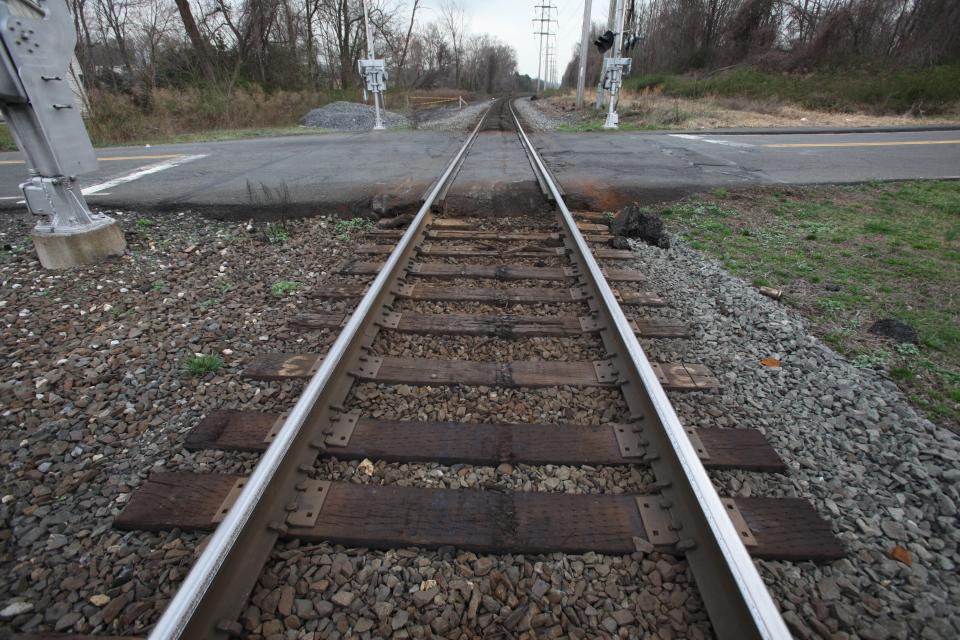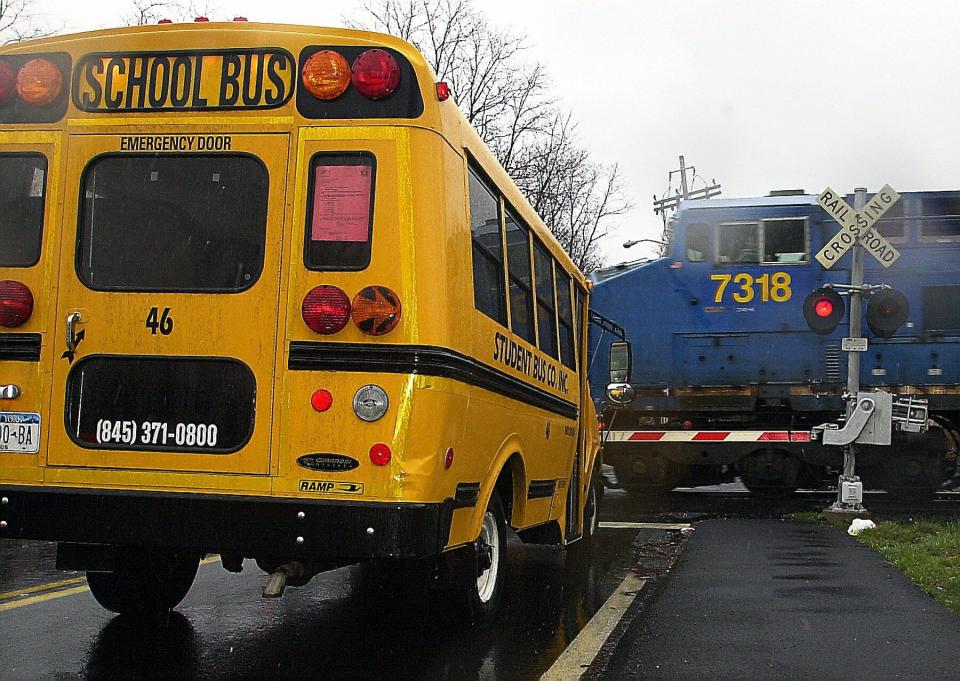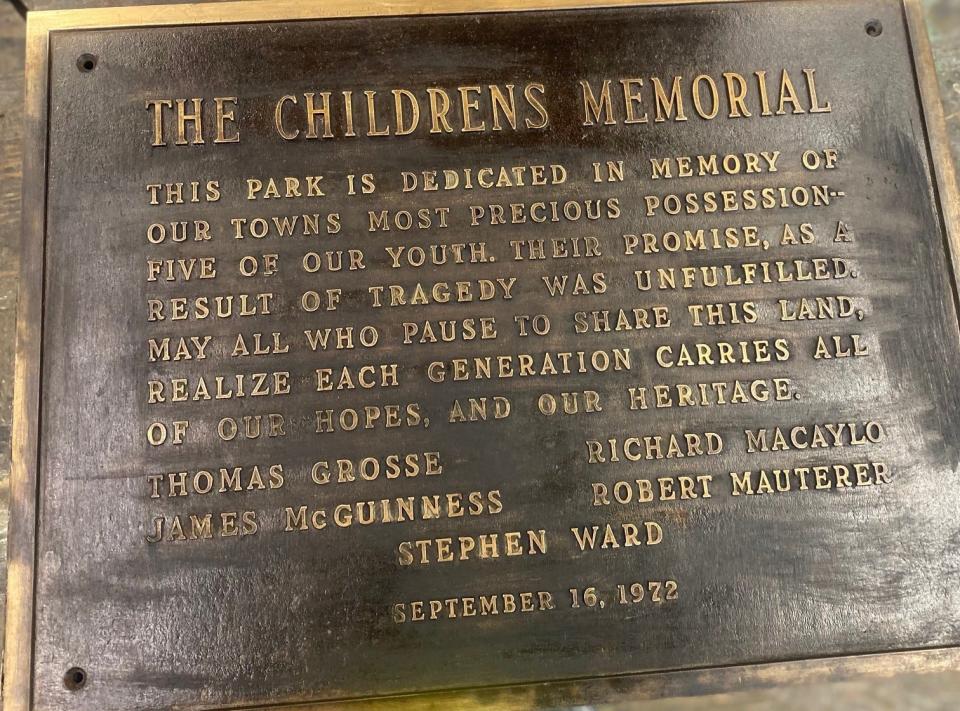Congers school bus crash: 50 years later, there are memories that can’t be erased
Jack DePietro was sitting in homeroom at Nyack High School early on the morning of March 24, 1972, when he heard there had been an accident involving one of the school’s buses.
“It took a while for everybody to find out the extent of it,” DePietro recalled. “The news came kind of slowly at first, just that a bus had crashed.”
DePietro would soon learn that three of his classmates had been killed and dozens more seriously injured that morning after their school bus was struck by a freight train at Gilchrest Road in Congers.

South Nyack: What lingering DPW sale could mean for taxpayers
Dining: 7 Rockland, Westchester restaurants have closed
Katelyn Tuohy: Runner wins silver at national event
The tragedy would later claim two more lives and be remembered as the worst ever involving a New York state school bus.
The bus was split in two during the 7:55 a.m. crash, with one section dragged more than 1,000 feet down the tracks.
The students who died at the scene were James McGuinness, 17; Richard Macaylo, 18; and Robert Mauterer, 14. Fourteen-year-old Thomas Grosse died three days later, and Stephen Ward, 16, died weeks later.

Some of the students were critically injured. Several children had been thrown from the bus; others had to be freed from the wreckage by rescue workers using torches and heavy equipment, The Journal News reported that day.
The bus driver, Joseph Larkin, a moonlighting New York City firefighter, had taken an alternate route from Valley Cottage that morning because of sewer repair work. He was also injured.
There were no barrier gates or warning lights at the railroad crossing.
Classmates who hurried to the scene seeking to learn of their friends’ fates wept as they picked up scattered pages of homework along the tracks. Stunned parents kept vigil at Nyack Hospital as they waited for news of their children.
The Penn Central engineer, Charles Carpenter, said the bus appeared in front of the 83-car train without warning. “What can I do with a heavy freight train behind me?” Carpenter was quoted in The New York Times when asked why it took more than 1,000 feet to stop.
Tragedy spurs changes

Investigators determined the crash was caused by driver error, and Larkin was convicted of criminally negligent homicide following a trial in which witnesses testified he had failed to stop the bus before it crossed into the train’s path. Larkin contended he didn’t see or hear the train before it struck the bus halfway across the tracks.
Larkin was sentenced to five years’ probation. He died in 2000, according to The Journal News.
The crash led to major changes in safety regulations. School buses now stop at all rail crossings, even if the gates are not down and no train is visible.
Construction standards for buses were toughened, as were the qualifications, training and certification for bus drivers. Buses were mandated to be equipped with seat belts and radios to stay in contact with their dispatchers. The tragedy also spurred the inception of trauma counseling for victims and responders.

‘Forever young’
The tragedy’s 50th anniversary will be marked by the Town of Clarkstown with a ceremony beginning at 11 a.m. March 24, at Congers Lake Memorial Park, 6 Gilchrest Road, Congers. The memorial will include participation by the Nyack school district and the Clarkstown Police Department.
A worn plaque in memory of the five boys that was installed in 1972, when the park was dedicated as Children’s Memorial Park, will be replaced. The new plaque will carry their names and an inscription that reads, in part: “In our hearts, these students will remain forever young.”
Town Supervisor George Hoehmann was just short of his seventh birthday when the crash occurred, and recalled going to the site just days afterward with his older sister, Mary, who had friends at Nyack High School, and his older brother, Howard.
“Even though I was quite young, I never forgot the sight of the debris,” Hoehmann said.
He called the tragedy “a transformational event in so many ways, not the least of which were the lives lost and those that were emotionally and physically affected by the crash. It led to systemic changes with buses and rail crossing safety throughout the United States.”
The town is producing a tribute video to mark the anniversary and preserve memories of the victims for future generations. Hoehmann invited residents to email his office at supervisor@clarkstown.org if they would like to share their memories.
Classrooms’ vacant seats
Jack DePietro knew all five of the boys who died in the crash. Jimmy McGuinness was a teammate on the football team.
“Stephen Ward was in my homeroom,” said DePietro, a musician who now lives in Dutchess County. “He sat right in front of me. I had to look at that empty chair every day. That was a little tough.”

During Ward’s April 15, 1972, funeral service at All Saints Episcopal Church in Valley Cottage, DePietro and his then-girlfriend Sally McCartney performed George Harrison’s “My Sweet Lord.” Ward had been an acolyte at the church.
The rest of the school year “was very solemn,” DePietro recalled. “There wasn’t a lot to be excited about. Especially going into those classes that those kids were in. There was that vacant seat where they sat, that’s the indelible image in my mind.”
Robert Brum is a freelance journalist who writes about the Hudson Valley. Read his work at robertbrum.com
This article originally appeared on Rockland/Westchester Journal News: Clarkstown ceremony to honor students killed in 1972 school bus crash

